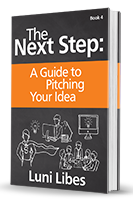Hansel, Han-sell, Han sells, Han Salesman
IT IS HIGHLY UNLIKELY that your first attempt to craft a great story will be actually be great. Storycrafting is a creative process, and creativity requires trial, error, and iteration.
A simple technique for creativity is to create three versions rather than just one. Start as you normally would, fleshing out your best idea into a story. However, rather than iterating and editing that draft, put it aside, start from scratch, and do the same for your next best idea. Try not to repeat too much from the first version, instead looking for new ideas to test out.
Now put the second version aside too. Take a break. Clear your mind. Be relaxed. You have two good drafts complete and no longer need to worry about your “best” ideas. Instead, you can now be creative.
Go crazy! Be creative! Be strange! Start a third version, but this time don’t aim for yet-more good ideas, try out whatever crazy, creative idea comes to mind. Tell the story from a completely different perspective. Tell it backwards. Start in the middle. The key is to remember that you have two good versions to go back to if none of these imaginative ideas work well.
When you are happy with this third version, if you have more ideas, work on those too. Four versions can be helpful too. Or five.
Once you are out of ideas, gather together all your versions and start in on a second draft, taking the best parts from all these variations.
If you get stuck, repeat this process, putting aside the current draft and once again go crazy, get creative, and try out new ideas that you’d otherwise throw away for being too far off the norm.
Zirconia
The best example I’ve seen from an entrepreneur using this technique is Zirconia, founded by one of my former MBA students who later became one of my fledglings.
The entrepreneur began the storycrafting process with a completely normal, somewhat boring company pitch. For a week he tried iterating on that pitch to turn it into a story, and every day for that week he presented one boring story after another. A sample opening from one of those drafts:
In the past, rust has been an unstoppable “force of nature” and an economic disaster. Bridges, power-towers, even concrete roads corrode, and the hidden costs are brutal. The cost of corrosion to infrastructure and durable goods amounts to 3% of global GDP, or $2.5 Trillion dollars annually. In the USA about $500 Billion is spent fighting rust across all major military and civilian economic sectors (2.7% GDP), and another $500 Billion is lost in economic activity, totaling 5.4% of GDP. Every American pays roughly $2,000 in corrosion tax annually, hidden in energy and utility bills. So, while the economic harm is bankrupting our nation, the environmental harm poisoning it. The same is happening in every nation state on earth.
Over the weekend he put all that aside and tried something completely different. Something that was a huge risk, completely beyond his “comfort zone.” Monday he walked up in front of the fledglings, in front of the pitch coaches he had never met before, and delivered three minutes of poetic story. Here is the opening:
Wise people say, “everything changes, nothing lasts forever” it is the impermanence of life that gives life meaning. Impermanence, ashes to ashes…rust to dust. What a terrible idea.
Because, the industrial world is made of steel. Add a little carbon to iron, and it loses its brittleness and can make things. The problem is, that carbon it also makes it corrode easier.
And we all know this, whether we drive a Ford or a Freightliner, drive over bridges or drill oil wells, we see it so often it just becomes life’s background. I dare say, we are all connected to corrosion because infrastructure matters to our lives, and our lives depend on steel.
In the world as it is, corrosion is coming for all of us, silently, in the dark and in the light, it is eating our assets, and consuming our budgets, it is always hungry and it never sleeps…
The poetry wasn’t perfect, but it was different from every one of the thousands of other pitches I’ve seen. It was a massive break from the norm. And it was clearly going to make an audience take notice, which is the whole point of pitching.
We iterated on this version for another two weeks to create the version presented on-stage. The final version was less poetic than that Monday, but still quite different and memorable. Watch Ben present the story himself.
Herve
Back to Herve, we used this same process to rework his story. We put aside the version from the past few chapters and tried again. Rather than telling the story chronologically, from Paniel Meat Processing to Livestock Bank, they way events happened in reality, we tried starting with Livestock Bank.
A few iterations later the story was truly shuffled, starting with Livestock Bank, flowing into Paniel Meat Processing, then ending again with Livestock Bank.
That seems complicated when described, but in the room that day it was one of many ideas tossed around and simple to try out. We sketched out an outline on a whiteboard, taking turns pitching different orders until it felt right. The hard part was then having Herve deliver iterations over and over again while still sounding excited and with the pitch coaches trying to hear it like it was the first time, to provide useful fine tuning feedback.
You can see how well that worked here. Note again that Herve was able to turn his essay-like first draft into that story in just one week and one day.













